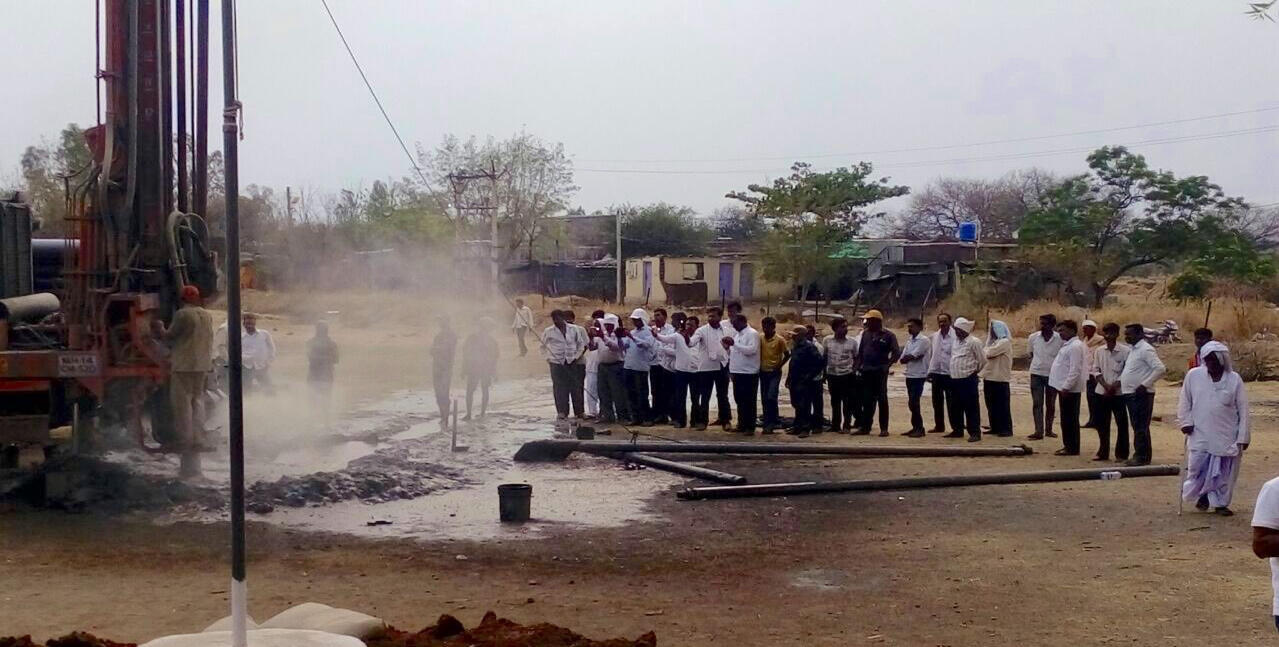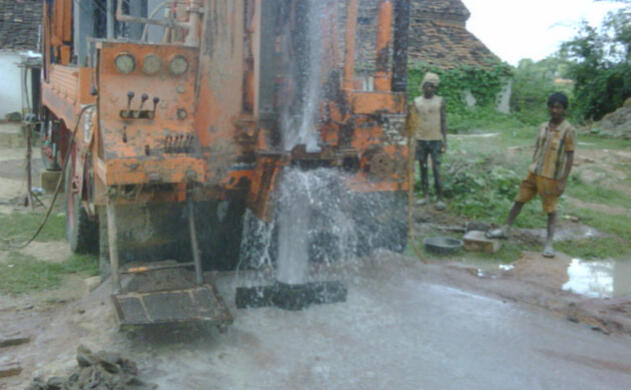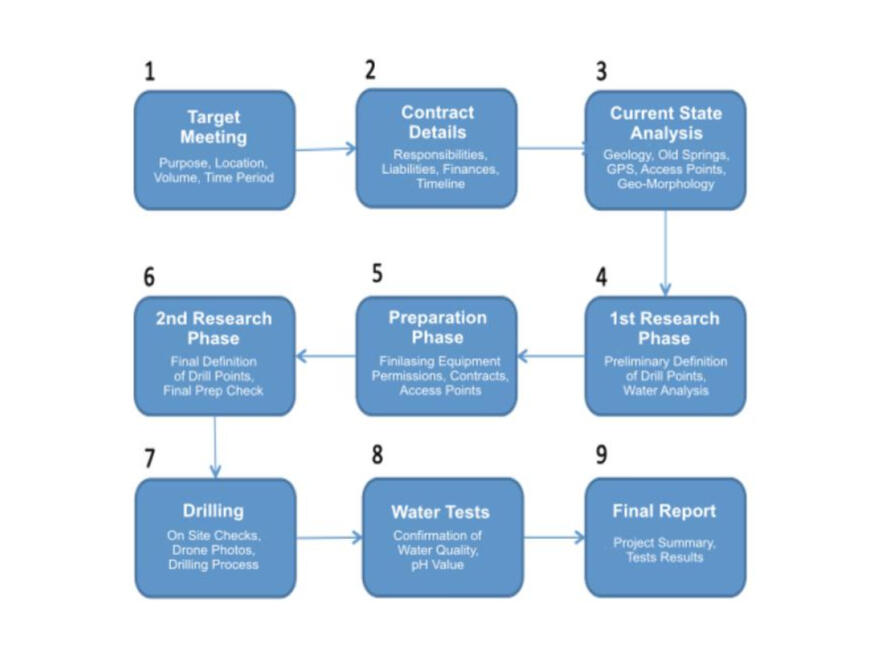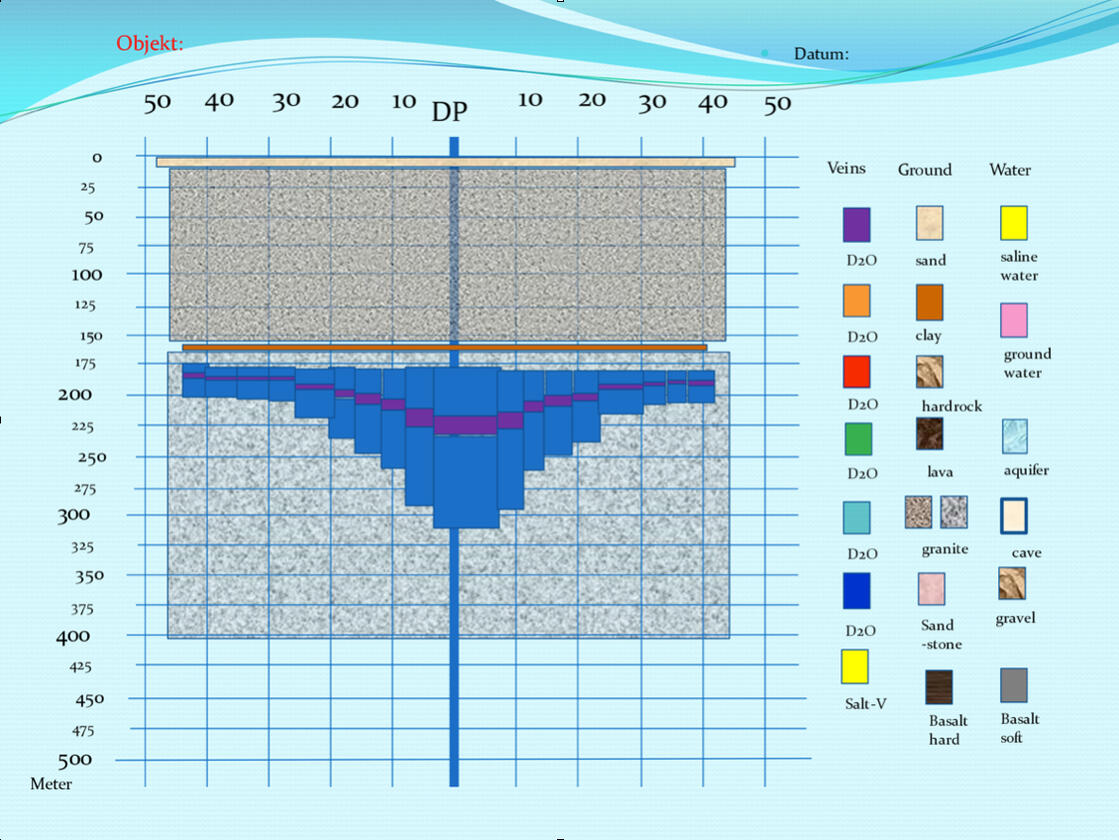CIBIS PROJECT
Commited to the Future

Geophysical Services
Health Concepts
About
Water for the World
At no time in the world has the shortage of water been so dramatically felt by people, plants and animals as it is today. The reasons are manifold - climatic changes, industrial lowering of the groundwater level, and an extremely increased demand. Drilling bans are circumvented and the costs of simple solutions such as a desalination plant are usually not to be borne by the countries concerned. In addition, successful lobbyism of big corporations and political crisis, especially in developing countries, make it difficult for many to create a sustainable future. In many countries, the water on a property is now worth more than the land with planting. It is our mission to make water be accessible to everyone at a minimum cost.
CIBIS PROJECT was founded in 2010 by Norbert Cibis. The company goals are based on the results of decades of research in the field of quantum biophysics. The focus of the intensive work was to develop a physical analysis method for locating water that is not groundwater. In almost all countries, groundwater is limited, if at all available. The form of water we focus on is Vein Water.We have worked on finding and defining this type of water for many years. We can say that vein water has a different molecular structure than groundwater, runs in closed channel systems which occur in different depths and are permanently water-bearing.Satellite images are sufficient for us to be able to locate and mark the water deposits in the depth of the Earth's crust. Our technology works according to the "reference principle" because on the level of quantum physics "like likes like" (Richard Feynman). Through our research we managed to abstract and generalise the quantum-physical attributes of various vein waters in order to create a point of reference. The principle is universal.After an initial development period with over 70 drillings in India, USA and Australia, the work of CIBIS PROJECT has now reach a success rate of over 80%. While continuing and expanding our research, we are committed to apply our knowledge more broadly and help many more people finding clean and drinkable water worldwide.
Vein Water
Groundwater vs. Vein Water
Commonly, only two forms of water are known, namely seawater and groundwater (or rainwater). Now and then, one is also aware of the fact that there are so-called subterranean water bubbles (aquifers).So called GROUNDWATER is rainwater which does not evaporate and seeps into the ground into loose and water-receptive layers close to the Earth's surface. Most of the time, it later reappears in the form of streams and rivers which ultimately flow into the sea. In some cases groundwater can flow into aquifers which are underground water reservoirs that have accumulated in cavities. They can become very large. In most cases this water is salty and therefore not of drinking water quality. Sometimes it’s suitable for agriculture.When researching for drinking water that is not groundwater, we found that current as well as mythological literature mention the so-called Vein Water. A lot of evidence indicates that it is precisely this vein water that has been used in some places for generations. One example is the city of Damascus in Syria. Three springs from a neighbouring valley supply the city with vein water. These springs have shown a steady flow of water independent of climatic conditions for more than 100 years.
This picture from Orissa, India shows the two basic types of water directly next to each other. The white river consists of groundwater with many suspended particles. The dark one contains only pure vein water. This type of water does not mix with any other water which indicates that it must have a very different set of chemical and physical properties.
Origin of Vein Water
If VEIN WATER is not part of the normal water cycle and is therefore not groundwater, and it does not originate from rainwater, rivers, lakes or the sea - where does it come from?Early observations already around 1900 describe how water came out of basalt and granite. They called it Primary Water because it was seen in connection with the primary rocks. With our knowledge today we know that these hard rocks must be penetrated by a special particle stream which does not have a molecular form yet, otherwise the passage through the high density of granite would not be possible.We believe that this particle stream consists of unfinished hydrogen and unfinished oxygen. These subatomic particles are brought together at certain points - the water generation sites - and then transformed with the help of hydrogen and oxygen. Neutrons are added which gives the whole molecule a special, unique shape. That’s why it is also called Deuterium (DHO) or Heavy Water (D2H3O3).In 2021, scientists found out that we can tell the difference between normal water and vein water by the taste:
"The additional neutron in the nucleus makes deuterium almost twice as heavy. Thus not only melting and boiling points of heavy water are higher, but also the pH-value - which strictly speaking should be called pD-value (min. pH 7). The slightly less acidic behaviour of D2O, for example, could play a role in its interaction with the receptor, which taste sweet. In addition, heavy water forms somewhat stronger hydrogen bonds - a bond type that is often central to biological structures and effects.” (Spectrum, 7th April 2021)
Vein Water runs deep underground in closed systems similar to the blood circulation system in the human body: Near the heart, the vein is under high pressure, and the pressure softens the further away it branches out into the body. The same applies to the water vein beneath the earth. At its origin, the newly generated water initially flows through small veins into the nearby environment. It can also form larger streams which dissolve again into the earth at more distant locations, both in greater depths and on the Earth's surface - as seen in the picture above. Big veins seem to have several water creation points which “refill” the vein with fresh water supply.All vein water systems appear to have an extremely high stability. In our view, this complex and multi-layered process can only succeed this well and long-lasting because all parts are embedded in a special magnetic tube and scalar wave system.
Properties of Vein Water
Vein Water has completely different properties than groundwater:
- Due to its different genesis, vein water has 1 or 2 additional neutron(s) in the nucleus
- The neutrons causes a different and sweeter taste
- Due to the different water densities, groundwater and vein water do not mix
- The unusual properties of vein water prevent germination
- Therefor the water can also be stored for a long time, even in hot climates
Applications of Vein Water
- Excellent drinking water, for non-profit and commercial purposes
- Cosmetic products
- Medical applications, even medical treatment due to its special behaviours
- High quality food production
- Industrial processes where a chalk-free and a germ-free water makes a significant difference in maintenance and costs etc
We believe that there is an abundance of water available on Earth. The coloured lines on our planet show the course of very large water veins. On the one hand, these contain very large amounts of water, but on the other hand, they are mainly located at great depths. To our knowledge, CIBIS PROJECT is the only company which can not only locate the various water systems worldwide, but also distinguish the different water types and their qualities before drilling.
Services
Analysis
Through a long-term research project, we have been able to develop methods and procedures which enable us to locate any water in the Earth's crust. Satellite images and Google Earth locations (kmz-files) are sufficient for us to mark the potential water deposits. The new technique of working with photos on a screen as a basis for an analysis offers the possibility of being able to examine small-scale and large-scale areas in one operation.The picture below from Nakuru, Kenya shows an overview with large veins in the preferred area. Black lines are cracks, brown areas are cavities. All blue colours symbolise water resources and currents of varying volume and at different depths. Depth range from about 160 M to 1700 M. The small-scale local geological conditions ultimately determine the exact drilling point.
The picture above was taken in Cottonwood, Idaho USA. It shows to what detail we can distinguish various structures and densities (coloured stripes) of a vein (big blue area above). Each vein is formed by up to 40 different types of water properties which can be classified into 8 groups. Smaller veins have correspondingly fewer different molecular shapes. These distinguishable shapes cannot be mixed even by manual agitation.
Drilling Procedure
The determination of a drilling point is subject to various conditions. Particular attention must be paid to the initial depth of the water, rock types in the subsoil, possible cavities and cracks. Thanks to our special technology, we can vertically examine the rock and water sequence before drilling. This gives us the chance to assess possible risks. In addition, it is possible to check for deviations during the drilling - in real time.
Success Rate
After an initial development period with over 70 drillings in India, the work of CIBIS PROJECT has now reach a success rate of over 80%. In fact, 18 of the last 20 drillings in Spain, the USA and Australia were completely successful.
- 2009-2019: 10 years of water exploration in India with drillings a.o. in Aznar, Bagdari, Gujarat, Haryana, Indore, Mhowgaon, New Dehli
- Out of the first 40 drillings, 20 were successful: As the technology was completely new, the success rate was of an incrementally increasing nature starting from more failures than successes to the reverse at the end. More recently, 9 out of 10 wells were successful in both, India and Australia (New South Wales).
For your reference, please have a look below at this workflow outline, and the example pictures in the gallery.
Due to the nature of this work, this can only be a short introduction to our services and expertise. For more information and a detailed proposal for what CIBIS PROJECT can offer to you, please write to us here.
Contact

CIBIS PROJECT is based in Germany and works worldwide.
For further information, please contact us via email:
Or simply use this contact form:
Imprint
Responsible for content:CIBIS PROJECT
Obere Bohle 15
59581 Warstein
Germany
Disclaimer
1. Content
The author reserves the right not to be responsible for the topicality, correctness, completeness or quality of the information provided. Liability claims regarding damage caused by the use of any information provided, including any kind of information which is incomplete or incorrect, will therefore be rejected. All offers are not-binding and without obligation. Parts of the pages or the complete publication including all offers and information might be extended, changed or partly or completely deleted by the author without separate announcement.
2. Referrals and links
The author is not responsible for any contents linked or referred to from his pages – unless he has full knowledge of illegal contents and would be able to prevent the visitors of his site from viewing those pages. If any damage occurs by the use of information presented there, only the author of the respective pages might be liable, not the one who has linked to these pages. Furthermore the author is not liable for any postings or messages published by users of discussion boards, guestbooks or mailing lists provided on his page.
3. Copyright
The author intended not to use any copyrighted material for the publication or, if not possible, to indicate the copyright of the respective object. The copyright for any material created by the author is reserved. Any duplication or use of objects such as diagrams, sounds or texts in other electronic or printed publications is not permitted without the author’s agreement.
4. Privacy policy
If the opportunity for the input of personal or business data (email addresses, name, addresses) is given, the input of these data takes place voluntarily. The use and payment of all offered services are permitted – if and so far technically possible and reasonable – without specification of any personal data or under specification of anonymized data or an alias. The use of published postal addresses, telephone or fax numbers and email addresses for marketing purposes is prohibited, offenders sending unwanted spam messages will be punished.
5. Legal validity of this disclaimer
This disclaimer is to be regarded as part of the internet publication which you were referred from. If sections or individual terms of this statement are not legal or correct, the content or validity of the other parts remain uninfluenced by this fact.

Ground Water vs. Vein Water

Analysis

Australia, New South Wales

Water Generation Point in Neubeuern, Germany

Spain, Estremadura

Kenya, Nakuru

USA, Idaho, Cottonwood

India, Valandi Latur, Madhya Pradesh

India, Uttar Pradesh, Aznar

Water Flowing in Uttar Pradesh, Aznar, India

India, Rajasthan

Australia, New South Wales

Workflow

Earth




















